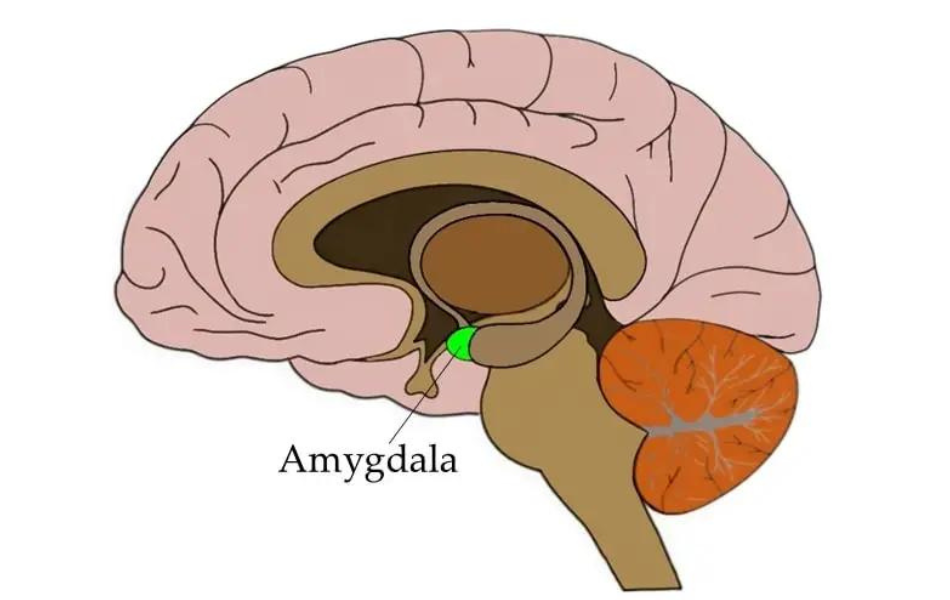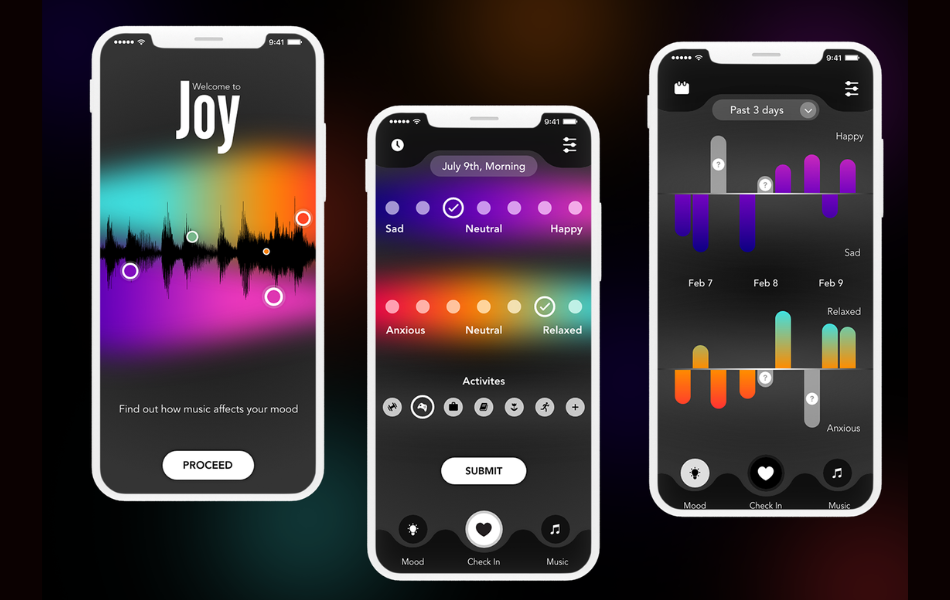The transformative journey of EI and EQ—where practical applications not only shape adults’ success but are crucial for children to grow into balanced maturity.
In our fast-paced world, emotional literacy stands as a crucial skill, transcending personal and professional realms. It involves understanding, managing, and effectively utilizing emotions, contributing to enhanced self-awareness and improved interpersonal relationships.
This category explores the practical applications of emotional literacy, weaving through real-life examples, and engaging analogies. Join us on a journey to unravel the significance of emotional intelligence, discovering how it can shape personal well-being, foster successful professional relationships, and lay the foundation for a fulfilling, emotionally intelligent life.
Improved Self-Awareness: Recognizing One’s Own Emotions

Enhancing self-awareness is the cornerstone of emotional literacy. Mindfulness exercises offer a practical gateway to achieving this awareness. Through activities such as deep breathing and focused meditation, individuals can intentionally direct their attention to the present moment.
When applied to emotional states, mindfulness enables individuals to identify and understand their feelings without judgment. For instance, pausing to observe the sensations associated with anger or joy fosters a deeper connection with one’s emotional landscape, laying the groundwork for effective self-regulation and personal growth.
The Science Behind Emotional Literacy

Emotional literacy is deeply rooted in the intricate workings of the brain. The amygdala, a key player in emotional processing, reacts swiftly to stimuli, triggering emotional responses. Meanwhile, the prefrontal cortex, responsible for decision-making and rational thought, acts as a regulatory force.
Understanding the science involves recognizing this dynamic interplay between emotional reactions and cognitive control. As individuals cultivate emotional literacy, neural pathways strengthen, fostering greater connectivity between these brain regions. This neural plasticity underlines the adaptability of the brain, showcasing that emotional intelligence is not just a static trait but a skill that can be nurtured and refined through intentional practice and learning.
Enhanced Self-Regulation: Strategies for Controlling Emotional Responses

1. Strategies for Controlling Emotional Responses
- Effective self-regulation involves adopting practical strategies to manage emotional reactions. One powerful technique is cognitive reappraisal—reevaluating the way we perceive situations to alter emotional responses.
- Additionally, practicing healthy coping mechanisms like exercise or journaling provides constructive outlets for emotional energy. These strategies empower individuals to navigate challenging scenarios with composure, fostering a sense of control over their emotional reactions
2. Analogy: Emotional Thermostat
- Imagine emotions as temperatures, with an emotional thermostat determining the degree of intensity. Like adjusting a thermostat to create a comfortable room temperature, individuals can modulate their emotional responses. This analogy highlights the power to regulate emotional “heat” by consciously choosing responses.
- Through self-awareness and proactive strategies, individuals can find their emotional balance, ensuring responses are appropriate and conducive to overall well-being. The emotional thermostat analogy simplifies the complex process of self-regulation, making it a tangible and relatable concept.
Effective Communication: Empathy and Active Listening
- Empathy and Active Listening
Central to effective communication is the dynamic duo of empathy and active listening. Empathy involves understanding and sharing another person’s feelings, fostering connection. Active listening, on the other hand, is a skill where one fully concentrates, understands, responds, and remembers what the other person is saying. Together, they create a harmonious exchange where individuals feel heard and understood, forming the foundation for meaningful and authentic communication.
Illustration

The “Empathy Bridge”
Envision communication as a bridge connecting individuals. The “Empathy Bridge” exemplifies how empathy and active listening construct a sturdy, supportive pathway for understanding. Empathy acts as one side of the bridge, conveying emotional resonance, while active listening forms the other side, ensuring accurate transmission of thoughts. Just as a bridge facilitates smooth passage, this combination of empathy and active listening establishes a seamless channel for communication. The illustration serves as a visual metaphor, emphasizing the collaborative construction of understanding in interpersonal interactions.
Practical Applications in Professional Settings: Leadership and Emotional Literacy
Creating a Positive Work Environment
Leadership infused with emotional literacy fosters a positive work environment. Leaders attuned to their emotions and those of their team can cultivate a workplace culture that encourages collaboration, innovation, and employee well-being. This positive atmosphere not only enhances job satisfaction but also contributes to increased productivity and organizational success.
Case Study
Examining the practices of successful leaders reveals a correlation between leadership effectiveness and emotional intelligence. Notable leaders who exemplify this connection include:
Satya Nadella

(Microsoft)
Known for his empathetic leadership style, Nadella has transformed Microsoft’s culture, emphasizing collaboration and openness.
Sheryl Sandberg

(Facebook)
Sandberg’s leadership is marked by emotional intelligence, fostering a workplace that values resilience and empathy.
Elon Musk

(Tesla, SpaceX)
Despite his reputation, Musk’s strategic decision-making often reflects a nuanced understanding of emotions, contributing to his success in leading innovative companies.
These case studies underscore the tangible impact of emotional literacy on leadership and organizational dynamics, offering valuable insights for aspiring and current leaders alike.
Team Collaboration
- Resolving Conflicts: Effective conflict resolution is a key component of team collaboration within a professional setting. Emotional literacy equips team members and leaders with the ability to navigate conflicts constructively. By understanding and addressing the emotions underlying disputes, individuals can promote open communication, and compromise, and ultimately strengthen team cohesion.
- Team-Building Activities: Team-building activities are powerful tools for fostering collaboration and strengthening interpersonal relationships. These activities, ranging from problem-solving exercises to trust-building games, provide opportunities for team members to understand each other’s strengths and weaknesses. Through shared challenges, individuals develop a deeper appreciation for diversity and collaboration, laying the groundwork for a cohesive and resilient team.
Incorporating emotional intelligence into conflict resolution and team-building initiatives not only improves the overall workplace atmosphere but also contributes to higher levels of team productivity and satisfaction.
Teaching Emotional Literacy to Children

Long-Term Impact on Mental Health
Early emotional education is akin to planting seeds in a garden that will bloom over a lifetime. Understanding and managing emotions from a young age establishes a solid foundation for mental well-being. Analogous to nurturing a young sapling, early emotional education provides children with the tools to weather life’s storms, fostering resilience and emotional balance as they grow.
Analogy: The Emotional Toolbox
Think of a child’s mind as a toolbox. Early emotional education fills this toolbox with a variety of tools—self-awareness, empathy, and emotional regulation. Just as a well-equipped toolbox empowers someone to handle household repairs, an emotionally literate child is equipped to navigate the complexities of their emotional landscape, promoting mental health and overall well-being throughout their lives.
Storytelling and Character Development

Engaging children in storytelling and character development is a captivating approach to imparting emotional literacy. Analogous to constructing a world with Lego blocks, stories allow children to build their understanding of emotions. Characters become emotional avatars, helping children explore the nuances of feelings and reactions. This interactive narrative experience not only sparks creativity but also enables children to relate emotions to real-life situations, laying the groundwork for empathetic understanding.
Example: The “Emotion Monsters” Game
The “Emotion Monsters” game is a playful and effective way to teach emotional literacy. Picture it as a board game where each square represents a different emotion. Players navigate the board by sharing personal experiences related to the emotion they land on. This interactive journey fosters open communication and empathy, turning abstract emotions into tangible, relatable concepts. Like a treasure hunt for emotional intelligence, the “Emotion Monsters” game makes learning about feelings an exciting adventure for children.
Overcoming Challenges in Developing Emotional Literacy

Cultural and Gender Considerations
- Navigating cultural variations in expressing emotions and challenging gender stereotypes requires a nuanced approach. Like learning a new language, fostering emotional literacy involves embracing diverse perspectives and recognizing that emotional expression can differ across cultures and genders. By promoting open dialogue and understanding, individuals can overcome these challenges, creating a more inclusive and emotionally intelligent environment.
Addressing Stigma
- Overcoming the stigma associated with discussing emotions is crucial. Analogous to breaking down barriers, normalizing emotional conversations requires creating safe spaces where individuals feel comfortable expressing their feelings. Personal anecdotes and shared experiences can be powerful tools in dismantling the stigma surrounding emotions, encouraging a culture that values emotional well-being as an integral part of personal development.
Tools and Resources for Developing Emotional Literacy

Books and Literature
Explore a rich collection of literature focused on emotional intelligence. Books like Daniel Goleman’s “Emotional Intelligence” or children’s stories emphasizing emotions provide valuable insights. These resources act as guides, offering diverse perspectives and practical strategies for developing emotional literacy.
Mobile Apps and Technology
Leverage the convenience of technology with mobile apps designed to enhance emotional awareness and regulation. Apps like “Mood Meter” or “Headspace” provide interactive exercises, guided meditations, and mood-tracking features, making emotional development accessible and engaging. Integrating technology into the learning process can be especially beneficial for individuals seeking personalized, on-the-go solutions for improving emotional intelligence.
Conclusion

In essence, exploring the practical applications of emotional literacy reveals its transformative power. From personal well-being to professional success, it becomes evident that integrating emotional intelligence into our daily lives is not just beneficial but essential for fostering healthier relationships and navigating life’s complexities with resilience and understanding.

